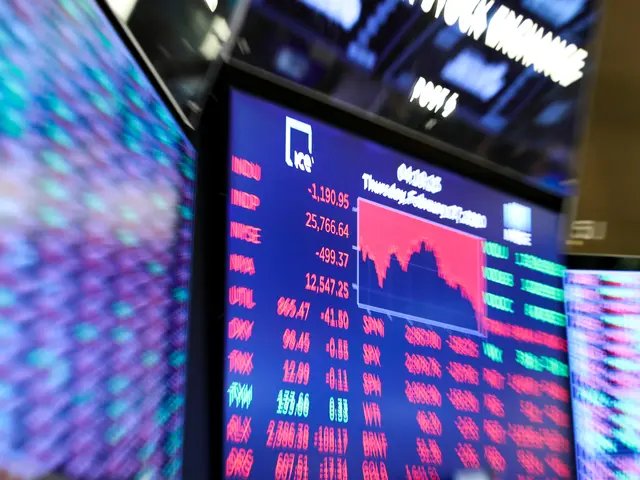U.S. equities plunged on Thursday with all three major indexes tumbling into correction territory amid rising risk-averse sentiment.
So far for the week, the blue-chip Dow erased more than 3,200 points, or more than 11 percent, to dip below the 26,000 psychological threshold. The broader SP 500 and the tech-heavy Nasdaq both declined more than 10 percent.
On Thursday, most of the 30 Dow component companies closed in red territory, with Microsoft and Dow shedding 7.05 percent and 6.61 percent, respectively, leading the laggards.
Some other big names, such as Apple, Intel and Exxon Mobil, fell more than 6 percent.
All of the 11 primary SP 500 sectors closed lower. Real estate and energy declined 5.59 percent and 5.47 percent, respectively, the top two laggards.
The sell-off of risk assets showed investors' mounting concern over global spread of COVID-19, UBS Global Wealth Management's Chief Investment Officer Mark Haefele said in a note.
Furthermore, technical selling is playing a role in exacerbating market moves, said Haefele.
"With the SP 500 now having traded through its 50-, 100-, and 200-day moving averages, we could see continued volatility-driven by forced selling in the week to come," he added.
The Cboe Volatility Index, widely considered the best fear gauge in the stock market, jumped 42.09 percent to 39.16.
As investors fled the stocks market and flocked into safe-haven assets, the benchmark 10-year Treasury yield dipped below 1.25 on Thursday, hitting a record low. Yields move inversely to prices. In addition, the yield on the 10-year note dropped further below that of the three-month bill on Thursday.
Paul Ashworth, chief U.S. economist at Capital Economics, said the recent re-inversion of the Treasury yield curve and the sharp sell-off in equities have reignited fears that the U.S. economy is about to be plunged into a recession.
Weak data also weighed on the market.
U.S. initial jobless claims, a rough way to measure layoffs, registered 219,000, an increase of 8,000 from the previous week's revised level, the Labor Department said Thursday. Economists polled by the MarketWatch had expected claims to total 214,000.
U.S. gross domestic product increased at an annual rate of 2.1 percent in the fourth quarter in the second estimate, unrevised from an advance estimate, the U.S. Commerce Department reported Thursday.
Investors saw a higher probability for further rate-cuts from the U.S. Federal Reserve amid potential economic impact of the coronavirus.
The current federal funds rate target range stands at 1.5 percent to 1.75 percent. Market expectations for a 25-basis-point rate cut in March sat at 99.3 percent, according to the CME Group's FedWatch tool.
 简体中文
简体中文

